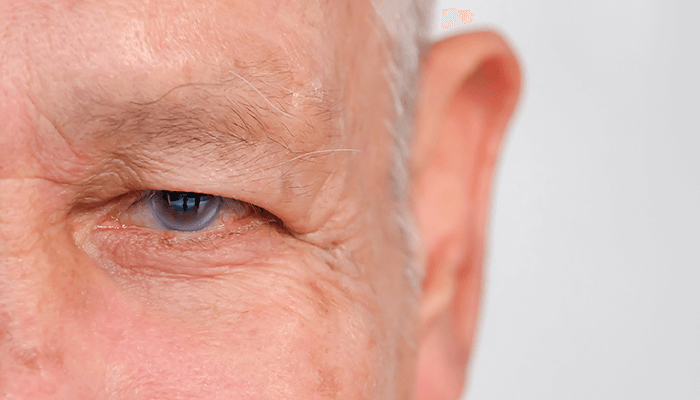
Perimetric Progressions
Using data collected in December 2021, researchers investigated the associations between the rates of ganglion cell/inner plexiform layer (GCIPL) and circumpapillary nerve fiber layer (cpRNFL) thinning, as well as the development of perimetric glaucoma in eyes with suspected glaucoma (1). Using a joint longitudinal multivariable survival model, the researchers found that the mean rates of GCIPL thinning were faster in eyes that developed perimetric glaucoma. Among other factors, African American race, male sex, and higher baseline visual field pattern standard deviation were associated with higher risks of developing perimetric glaucoma.
At home monitoring
To assess the validity of home contrast sensitivity (CS) monitoring as a measure of glaucomatous damage, researchers asked 26 participants to remotely use the Berkeley Contrast Squares application – a free downloadable tool that records users’ contrast sensitivity for varying degrees of visual acuity (2). Participants were asked to send logarithmic CS results within a minimum eight week test–retest period. Validating results against office-based contrast sensitivity testing collected within the previous six months, the study identified high Berkeley Contrast Squares test–retest reliability with an intraclass correlation coefficient score of 0.91 and significant correlation between repeat test results and baseline test scores.
Apple of my AI
Glaucoma management demands a combination of multiple testing and imaging modalities, making it a key target for clinical decision support (CDS) (3). To evaluate clinical perceptions of a prototyped CDS tool that integrates visual field (VF) metric predictions from AI models, 10 clinicians from the University of California, San Diego, participated in six cases uploaded to a CDS tool. For each case, clinicians answered questions management recommendations, paying particular attention to the utility and validity of the AI-predicted VF metrics. The results of the study found that a CDS tool can present AI model outputs in useful and reliable ways that clinicians are willing to integrate into clinical decision making.
Honing in on hyphema
Researchers set out to identify the risk factors of hyphema development after Kahook Dual Blade (KDB) excisional goniotomy combined with phacoemulsification for glaucoma management (4). A total of 202 eyes in 145 patients received the combined procedure and were evaluated for preoperative factors predictive of postoperative hyphema. Hyphema occurred in 8.4 percent of patients on day one, with several significantly correlated risk factors, including male sex, angle closure glaucoma, and postoperative day one IOP.
Significant associations
A new study – analyzing 112 eyes from patients with primary open-angle glaucoma (POAG) – has identified correlations between microvasculature dropout and the central retinal vessel trunk in POAG eyes (5).
Cutting costs
Research into cost differences between a second glaucoma drainage device (SGDD) and transscleral cyclophotocoagulation (CPC), has found that the total direct cost in the SGDD group was more than double that in the CPC group (6).
Implant evaluation
An evaluation of the XEN45 stent in eyes with open angle glaucoma and high myopia found that, although the XEN implant lowered IOP in highly myopic eyes with glaucoma, rates of hypotony were high (7).
Same but different
Assessing 31 case control studies, researchers found that the corneas of normal tension glaucoma patients are more deformable than normal controls, in contrast to the stiff corneas of high-tension glaucoma and ocular hypertension patients (8).
References
- V Mohammadzadeh et al., “Association of Rates of Ganglion Cell and Inner Plexiform Thinning With Development of Glaucoma in Eyes With Suspected Glaucoma,” JAMA Ophthalmol, [Online ahead of print] (2023). PMID: 36862395.
- M Sohail, “Remote Contrast Sensitivity Testing Appears to Correlate With Degree of Glaucomatous Macular Damage,” J Glaucoma, [Online ahead of print] (2023). PMID: 36897654.
- J S Chen, “Usability and Clinician Acceptance of a Deep Learning-Based Clinical Decision Support Tool for Predicting Glaucomatous Visual Field Progression,” J Glaucoma, 32, 151 (2023). PMID: 36877820.
- E L Pratte, “Risk Factors for Hyphema Following Kahook Dual Blade Goniotomy Combined With Phacoemulsification,” J Glaucoma, 32, 165 (2023). PMID: 36730925.
- H Zhang et al., “Association between Parapapillary Microvasculature Dropout and Central Retinal Vessel Trunk in Primary Open-angle Glaucoma,” J Glaucoma, [Online ahead of print] (2023). PMID: 36897651.
- J X Ma et al., “Direct Costs of Second Aqueous Shunt Implant Versus Transscleral Cyclophotocoagulation (The Assists Trial),” J Glaucoma, 32, 145 (2023). PMID: 36848258.
- A Fea et al., “Effectiveness and Safety of XEN45 in Eyes With High Myopia and Open Angle Glaucoma,” J Glaucoma, 32, 178 (2023). PMID: 36730214.
- M X Liu et al., “Corneal Biomechanics in Primary Open Angle Glaucoma and Ocular Hypertension: A Systematic Review and Meta-analysis,” J Glaucoma, 32, 24 (2023). PMID: 36583701.
